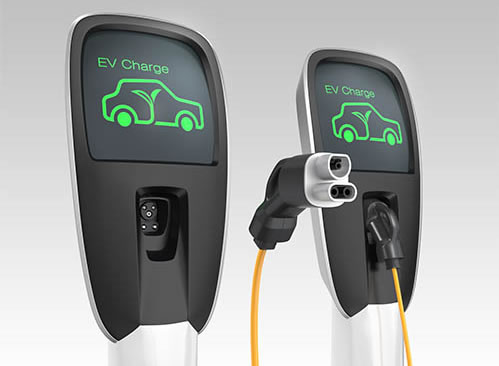Call This Friday to Get 25$ OFF
24-Hour Emergency Electricians in San Antonio
Call this Friday to Get 25$ OFF
Need an Electirician?
SCHEDULE SERVICE NOWCall Us Now
210-955-9600Call This Friday to Get 25$ OFF
24-Hour Emergency Electricians in San Antonio
Call this Friday to Get 25$ OFF
Need an Electirician?
SCHEDULE SERVICE NOWCall Us Now
210-955-9600
Electric vehicles have become all the craze, even if not for the first time in history. However, the difference between now and when electric vehicles were popular a century ago is the greater infrastructure for charging electric vehicles. In fact, electric vehicles can even be charged in homes! In this brief article brought to you by Mr. Electric, we give you an introduction to everything you need to know about EV plug types.
If you ever need reliable electrical repair service, you can call Mr. Electric to hire a uniformed and certified electrician. We are happy to schedule a convenient appointment or arrange an urgent dispatch.
Let's begin with the most ubiquitous and accessible option - Level 1 charging. This is the standard charging method that makes use of a standard household outlet. Most electric vehicles come equipped with a Level 1 charging cord that can be plugged into a 120-volt outlet, which is the same type of outlet you use for your toaster or smartphone charger.
While Level 1 charging is the slowest among the various options, it provides an essential and convenient solution for overnight charging at home, ensuring your EV is ready to roll each morning.
For a faster and more robust charging experience, Level 2 charging stations have become the workhorse of the electric vehicle charging network. These stations typically operate on a 240-volt system and can charge your electric vehicle significantly faster than Level 1 charging.
Level 2 charging is commonly found at public charging stations, workplaces, and increasingly in residential settings where homeowners opt to install dedicated charging stations. The versatility of Level 2 charging makes it a preferred choice for those looking to balance charging speed with infrastructure accessibility.
DC fast charging steps into the spotlight when time is of the essence. DC fast chargers operate on a higher voltage (typically 480 volts or more) and deliver a rapid charge to your electric vehicle's battery. Unlike Level 1 and Level 2 chargers, DC fast chargers are rarely – if ever – installed in homes.
These stations are typically strategically placed along highways and major travel routes, making them ideal for long-distance journeys. The speed at which DC fast chargers replenish an EV's battery has earned them the moniker of the "express lane" of electric vehicle charging.
As if the voltage levels weren't enough, electric vehicle enthusiasts must also navigate the diverse landscape of connector types. The three primary connector types in use today are the SAE J1772, CHAdeMO, and CCS (Combined Charging System).
SAE J1772 is a standard in North America and is commonly used for Level 1 and Level 2 charging. It features a simple design with a single plug, making it user-friendly for a wide range of electric vehicles.
Originating in Japan, CHAdeMO is a fast-charging connector type that has gained popularity globally. Its distinctive appearance includes both a large and small plug, allowing for high-speed DC charging.
CCS has become the prevailing standard in Europe and is gaining traction in North America. It combines the benefits of Level 2 and DC fast charging, accommodating a wide range of electric vehicles with a single, versatile plug.
If you are considering an EV charging station installation in your home to speed up the charging process, then make sure to hire certified electricians. The uniformed electricians at Mr. Electric have the experience, expertise, and equipment to handle installations correctly the first time around.